The Louvre, First Visit
I just woke up from a two hour nap that I severely needed after a grueling seven hour visit to the largest museum in the world, The Musée de Louvre. I thought I was prepared for the daunting task of making a survey of its collections within the space of a day and I even reserved this first Sunday of November simply because the entrance is free of charge. After bolting down a heavy breakfast and chugging a can of Red Bull, I went directly to the museum by metro and surfaced to discover that even as early as 9am the queue had snaked all the way from the Pyramid entrance across the Palais Royal courtyard and to the very end of the Cour Carre, Napoleons courtyard in the adjacent building. It took the line where I was queued 56 minutes to reach the main entrance, enduring the sheets of light to medium rain that poured all the way through. Despite being drenched and chilled to my marrow, I celebrated the triumph of being inside the Louvre, finally after a month in Paris. I thank my years of matriculation at the University of the Philippines in Diliman for teaching me how to endure a queue. But the difference between UP and the Louvre is a matter between standing in line and walking in line.
Guided by a map in English, I started with one of the three main sections, The Richelieu (the others being Denon and Sully) to survey the sculptures from the Middle Ages. This staring point was due to the fact that I proposed a study of Medieval sculptures in France for my residency application and I wanted to fulfill this objective first and foremost. I was glad to discover that this section featured fragments and statuary of the churches outside Paris that I wanted to see. Sketching and documenting these displays gave me a good idea of the different characteristics of several churches and their periods. I lingered over XIII century stone statues of Childebert, the builder of St. Germaine des Prés and Sainte Genevieve, both works coming from Ile de la Cité. Childebert's and Genevieve's statues uncannily resembled the references that I was given to copy when I was studying rebulto making in the mid 1990's. I noticed that I the area I was in was not frequented by others so I began to draw with more detail, which attracted a few to take a photograph of me, my sketch and my models. It was very awkward.
From there I surveyed the sculptures of the French Renaissance, and did more drawings at the Cour Marly, which was dominated by large equestrian bronzes. When I sat in one of the stone seats of the courtyard I again noticed the same predicament that I experienced in Musée d'Orsay: i was confronted by a row of marble and bronze buttocks. Intrigued by the speculation that perhaps the view of a sculpture's behind and groin can contribute to relaxing and lounging made me take several pictures of all rear views of sculptures all over the Louvre. In hindsight not a lot of sculptures, especially figurative ones, are oriented away from frontality. Only Bernini and the twisted spines of Baroque figures can be claimed true sculptures-in-the-round. Even Michelangelo preferred to emphasize one side of his works as the vantage point, with all other areas as support. I continued my way to French Romantic sculptures at the Cour Puget where several of Puget's work was installed. I found a fellow artist, an older balding, bearded guy, had sequestered a seat from the museum watcher and was making a pastel drawing of a carved marble girl whispering to a bust of a man. The sun had finally come out and its light was strewn across the statues like soft gauze, illuminating the crystals within the stones. Encouraged by this side illumination I joined in the sketching session and smiled at a former fantasy that if given a chance I would draw or paint in the Louvre. I was fourteen then when I made that wish. Twenty two years later is not long a wait, I reckon. In fact it was so hard not to lapse feeling like an art student once more in the presence of works of masters. Portrait busts also caught my attention and my Ipad camera, and most of the marbles of the French school or the Academy, under the influence of Nicolas Poussin.
I crossed over into Cour Khorsabad and suddenly I was in Mesopotamia, 6,000 years ago. The abrupt change was also welcome, as I am keenly interested in all things ancient and archeological. Indeed I was so delighted I clicked and sketched away, without pause and even let out an interjection when faced with the gigantic Assyrian bulls and man-headed lions. I was disappointed to find out that the access to the Egyptian section was closed from this area and I had to retrace my steps all the way to Sully. However this did not stop me from observing objects and statues from this collection, especially the manner of representations of human figures - from the curious iconography of the priest caste of Sumeria to the Amunnaki gods (winged man-beasts) of Babylon.
I climbed to the second level where various Objets d'art from Medieval Europe were kept in vitrines. I documented reliquaries from the early Medieval period, the Renaissance and even 17th century but did not traverse the other end that held objects from Napoleonic times to the 19th century. I thought my exposure at Carnavalet was enough for that subject. I also desisted from going to the second floor of Flemish, German and French 16th to 17th century paintings. That will be good to see on another first Sunday.
I exited from Richelieu and took the first floor of Denon to see the Italian Paintings of the 13th to 17th century, and of course to pass through the Grand Gallery where Mona Lisa holds her court. But the Boticellis, Giottos and Trecento, Quatrocento masters held me back to going full speed to La Gioconda. It was Fra Angelico, now Santo Angelico, that detained me for more than ten minutes. I fell into musing that religious painting had somehow lost its sacramental function to a more aesthetic or technical concern after Fra Angelico. Even Fra Filipo Lippi became too engrossed with proper perspective and that Mantegna, Ucello, Rustici, Ghirlandaio and the rest made anatomical and perspectival correctness of prime value. Giotto of course is still an icon painter compared to the guys of the High Renaissance.
It was Veronese's Wedding at Cana - a titanic canvas if there was one - that prevented me from joining the mob taking a photo of the glass encased Mona. The figures of Veronese's work curiously mirrors the numbers milling below it and his sense of grandeur was also human, as the work portrayed the wedding party more than the first miracle of Jesus. It was for all purposes a secular work posing as a religious narrative.
I did not take a photo of the Mona Lisa. Instead I took photos of the people taking photos of the Mona Lisa. their eagerness and interest were more subject-worthy. Anyway, if I wanted an image of this famous painting, I can download a high resolution one anytime. But I did ogle at three Leonardos - Saint Anne, The Madonna of the Rocks and a portrait of a woman - at the gallery on my way out of the cul-de-sac. I chided an Indian national who took a photo with a straightforward flash off the Madonna of the Rocks and told him the light will damage the work. He moved away when I motioned to call for a museum sitter and then an American dude experimented with the touch sensors and poked every painting on the east wall. He and his fellow punk dashed quickly when the sirens sounded off and I encountered them later in the sculpture section where the poker guy took the plinth of an absent sculpture and posed as the lord of boorish idiots.
The paintings began to look the same, even if I was actually looking at an El Greco, a Velasquez, a Guido Reni: I was tired. My mind was giving up and I was ready to feel nauseous. Enough of painting! Suddenly I spot a Caravaggio and well, I went straight to the Spanish section and mustered enough strength to face Goya. The last works I remember before descending to the Porte Lions were two Turners and a dark Fuseli. I wanted to go back to the studio and call it quits.
Fortunately there was no exit at the Lions Gate and I found the Asia,Africa and Oceanic section. I suddenly found a sign that said "Philippines" and was surprised to see an Ifugao sculpture in the midst of the collection. At least there was one Filipino sculpture, in wood no less, that made it to the Louvre. This find made me simmer once more with interest so I walked through Denon into Sully where I discovered the great Greeks, the Etruscans, the Romans and then finally, The Egyptians.
Suddenly with the works of Polykleitos, Phidias and the others I was back in the college of Fine Arts, making up stories of the classical and Hellenistic statues in the vernacular. I took photos of works, but conscious of the fact that I could see Venus de Milo at the rear section of the gallery. When I finally got to her, a good stream of light flowed onto her torso...and so I took pictures of her backside and with it, the faces of the crowd gaping at her. I did the same thing with the Nike of Samothrace although to see her mounted on a stone boat made me rethink all the things Ive read about this work. There are no texts that I can recall saying Nike is on a boat...why this omission? It would have made sense...
When I got to the Egyptian section it was so narrow and so crowded it felt like being in the galleys of the Great Pyramid. But if you are expecting something of a magnitude of a Kings Tut chamber of treasures this collection is a big letdown. Besides the famous Seated Scribe, there was practically nothing much of interest - definitely no mummies - lots of sarcophagi and small items like cosmetic equipment, but that is all there is. The British I reckon have better pieces. It was interesting to know that some wood sculptures survived four millennia to be in glass cases. This encouraged me that wood can indeed be extant after so man centuries. Seeing so much art in stone for the past days have made me think of punches and drills rather than chisels.
I made a promise that I will go home after I see Michelangelo's Slaves. Everything else can be on another itinerary. The Louvre has finally subdued my spirit.
From Sully I made my way back to Denon. I braced for the worst packed crowds at the Gallery Michelangelo...then nothing. The section of Italian sculptures were a best the least populated area. People took photos of Antonio Canova's Cupid and Psyche and their famous almost-kiss (while I took pictures of their clean white backs and buttocks with crowds in the periphery). But most I observed passed by The Slaves, took some shots - even as afterthought - and left. I was, for forty minutes, the only person gaping and drawing at the two marbles of the Divine Michelangelo. So, in the contest between Leonardo the painter and Michelangelo the sculptor that began in the 1500's came down to a win by the elder painter, as far as the Louvre is concerned.
So I took the opportunity of the lifetime to draw from a Michelangelo and I used a notebook with a cover of a Leonardo drawing to do the feat with. If this was the only reason, I said to myself, that I am in France then this should be enough. (Well of course I will be back...I have not yet seen the Large French canvases and the new Islamic wing!
I really took my time with the Slaves; I was winding down and mentally preparing to leave. When I have finished a dozen or so sketches, I went back to the central area, beneath the Pyramid and took the road to the Carousel area where my last photo of the day was of the Inverted Pyramid, where according to the fiction of Dan Brown lay the remains of Mary Magdalene.The surrounding area was another underground mall of sorts where a Starbucks and a Mac store stood facing each other. Another line was making its way into the Louvre entrance. It was shorter than the kilometer long queue that I had to endure this morning. Perhaps when I come back, I will make my way through here. The Metro Line 1 was just around the corner.
Until next time. I shall return.
I just woke up from a two hour nap that I severely needed after a grueling seven hour visit to the largest museum in the world, The Musée de Louvre. I thought I was prepared for the daunting task of making a survey of its collections within the space of a day and I even reserved this first Sunday of November simply because the entrance is free of charge. After bolting down a heavy breakfast and chugging a can of Red Bull, I went directly to the museum by metro and surfaced to discover that even as early as 9am the queue had snaked all the way from the Pyramid entrance across the Palais Royal courtyard and to the very end of the Cour Carre, Napoleons courtyard in the adjacent building. It took the line where I was queued 56 minutes to reach the main entrance, enduring the sheets of light to medium rain that poured all the way through. Despite being drenched and chilled to my marrow, I celebrated the triumph of being inside the Louvre, finally after a month in Paris. I thank my years of matriculation at the University of the Philippines in Diliman for teaching me how to endure a queue. But the difference between UP and the Louvre is a matter between standing in line and walking in line.
Guided by a map in English, I started with one of the three main sections, The Richelieu (the others being Denon and Sully) to survey the sculptures from the Middle Ages. This staring point was due to the fact that I proposed a study of Medieval sculptures in France for my residency application and I wanted to fulfill this objective first and foremost. I was glad to discover that this section featured fragments and statuary of the churches outside Paris that I wanted to see. Sketching and documenting these displays gave me a good idea of the different characteristics of several churches and their periods. I lingered over XIII century stone statues of Childebert, the builder of St. Germaine des Prés and Sainte Genevieve, both works coming from Ile de la Cité. Childebert's and Genevieve's statues uncannily resembled the references that I was given to copy when I was studying rebulto making in the mid 1990's. I noticed that I the area I was in was not frequented by others so I began to draw with more detail, which attracted a few to take a photograph of me, my sketch and my models. It was very awkward.
From there I surveyed the sculptures of the French Renaissance, and did more drawings at the Cour Marly, which was dominated by large equestrian bronzes. When I sat in one of the stone seats of the courtyard I again noticed the same predicament that I experienced in Musée d'Orsay: i was confronted by a row of marble and bronze buttocks. Intrigued by the speculation that perhaps the view of a sculpture's behind and groin can contribute to relaxing and lounging made me take several pictures of all rear views of sculptures all over the Louvre. In hindsight not a lot of sculptures, especially figurative ones, are oriented away from frontality. Only Bernini and the twisted spines of Baroque figures can be claimed true sculptures-in-the-round. Even Michelangelo preferred to emphasize one side of his works as the vantage point, with all other areas as support. I continued my way to French Romantic sculptures at the Cour Puget where several of Puget's work was installed. I found a fellow artist, an older balding, bearded guy, had sequestered a seat from the museum watcher and was making a pastel drawing of a carved marble girl whispering to a bust of a man. The sun had finally come out and its light was strewn across the statues like soft gauze, illuminating the crystals within the stones. Encouraged by this side illumination I joined in the sketching session and smiled at a former fantasy that if given a chance I would draw or paint in the Louvre. I was fourteen then when I made that wish. Twenty two years later is not long a wait, I reckon. In fact it was so hard not to lapse feeling like an art student once more in the presence of works of masters. Portrait busts also caught my attention and my Ipad camera, and most of the marbles of the French school or the Academy, under the influence of Nicolas Poussin.
I crossed over into Cour Khorsabad and suddenly I was in Mesopotamia, 6,000 years ago. The abrupt change was also welcome, as I am keenly interested in all things ancient and archeological. Indeed I was so delighted I clicked and sketched away, without pause and even let out an interjection when faced with the gigantic Assyrian bulls and man-headed lions. I was disappointed to find out that the access to the Egyptian section was closed from this area and I had to retrace my steps all the way to Sully. However this did not stop me from observing objects and statues from this collection, especially the manner of representations of human figures - from the curious iconography of the priest caste of Sumeria to the Amunnaki gods (winged man-beasts) of Babylon.
I climbed to the second level where various Objets d'art from Medieval Europe were kept in vitrines. I documented reliquaries from the early Medieval period, the Renaissance and even 17th century but did not traverse the other end that held objects from Napoleonic times to the 19th century. I thought my exposure at Carnavalet was enough for that subject. I also desisted from going to the second floor of Flemish, German and French 16th to 17th century paintings. That will be good to see on another first Sunday.
I exited from Richelieu and took the first floor of Denon to see the Italian Paintings of the 13th to 17th century, and of course to pass through the Grand Gallery where Mona Lisa holds her court. But the Boticellis, Giottos and Trecento, Quatrocento masters held me back to going full speed to La Gioconda. It was Fra Angelico, now Santo Angelico, that detained me for more than ten minutes. I fell into musing that religious painting had somehow lost its sacramental function to a more aesthetic or technical concern after Fra Angelico. Even Fra Filipo Lippi became too engrossed with proper perspective and that Mantegna, Ucello, Rustici, Ghirlandaio and the rest made anatomical and perspectival correctness of prime value. Giotto of course is still an icon painter compared to the guys of the High Renaissance.
It was Veronese's Wedding at Cana - a titanic canvas if there was one - that prevented me from joining the mob taking a photo of the glass encased Mona. The figures of Veronese's work curiously mirrors the numbers milling below it and his sense of grandeur was also human, as the work portrayed the wedding party more than the first miracle of Jesus. It was for all purposes a secular work posing as a religious narrative.
I did not take a photo of the Mona Lisa. Instead I took photos of the people taking photos of the Mona Lisa. their eagerness and interest were more subject-worthy. Anyway, if I wanted an image of this famous painting, I can download a high resolution one anytime. But I did ogle at three Leonardos - Saint Anne, The Madonna of the Rocks and a portrait of a woman - at the gallery on my way out of the cul-de-sac. I chided an Indian national who took a photo with a straightforward flash off the Madonna of the Rocks and told him the light will damage the work. He moved away when I motioned to call for a museum sitter and then an American dude experimented with the touch sensors and poked every painting on the east wall. He and his fellow punk dashed quickly when the sirens sounded off and I encountered them later in the sculpture section where the poker guy took the plinth of an absent sculpture and posed as the lord of boorish idiots.
The paintings began to look the same, even if I was actually looking at an El Greco, a Velasquez, a Guido Reni: I was tired. My mind was giving up and I was ready to feel nauseous. Enough of painting! Suddenly I spot a Caravaggio and well, I went straight to the Spanish section and mustered enough strength to face Goya. The last works I remember before descending to the Porte Lions were two Turners and a dark Fuseli. I wanted to go back to the studio and call it quits.
Fortunately there was no exit at the Lions Gate and I found the Asia,Africa and Oceanic section. I suddenly found a sign that said "Philippines" and was surprised to see an Ifugao sculpture in the midst of the collection. At least there was one Filipino sculpture, in wood no less, that made it to the Louvre. This find made me simmer once more with interest so I walked through Denon into Sully where I discovered the great Greeks, the Etruscans, the Romans and then finally, The Egyptians.
Suddenly with the works of Polykleitos, Phidias and the others I was back in the college of Fine Arts, making up stories of the classical and Hellenistic statues in the vernacular. I took photos of works, but conscious of the fact that I could see Venus de Milo at the rear section of the gallery. When I finally got to her, a good stream of light flowed onto her torso...and so I took pictures of her backside and with it, the faces of the crowd gaping at her. I did the same thing with the Nike of Samothrace although to see her mounted on a stone boat made me rethink all the things Ive read about this work. There are no texts that I can recall saying Nike is on a boat...why this omission? It would have made sense...
When I got to the Egyptian section it was so narrow and so crowded it felt like being in the galleys of the Great Pyramid. But if you are expecting something of a magnitude of a Kings Tut chamber of treasures this collection is a big letdown. Besides the famous Seated Scribe, there was practically nothing much of interest - definitely no mummies - lots of sarcophagi and small items like cosmetic equipment, but that is all there is. The British I reckon have better pieces. It was interesting to know that some wood sculptures survived four millennia to be in glass cases. This encouraged me that wood can indeed be extant after so man centuries. Seeing so much art in stone for the past days have made me think of punches and drills rather than chisels.
I made a promise that I will go home after I see Michelangelo's Slaves. Everything else can be on another itinerary. The Louvre has finally subdued my spirit.
From Sully I made my way back to Denon. I braced for the worst packed crowds at the Gallery Michelangelo...then nothing. The section of Italian sculptures were a best the least populated area. People took photos of Antonio Canova's Cupid and Psyche and their famous almost-kiss (while I took pictures of their clean white backs and buttocks with crowds in the periphery). But most I observed passed by The Slaves, took some shots - even as afterthought - and left. I was, for forty minutes, the only person gaping and drawing at the two marbles of the Divine Michelangelo. So, in the contest between Leonardo the painter and Michelangelo the sculptor that began in the 1500's came down to a win by the elder painter, as far as the Louvre is concerned.
So I took the opportunity of the lifetime to draw from a Michelangelo and I used a notebook with a cover of a Leonardo drawing to do the feat with. If this was the only reason, I said to myself, that I am in France then this should be enough. (Well of course I will be back...I have not yet seen the Large French canvases and the new Islamic wing!
I really took my time with the Slaves; I was winding down and mentally preparing to leave. When I have finished a dozen or so sketches, I went back to the central area, beneath the Pyramid and took the road to the Carousel area where my last photo of the day was of the Inverted Pyramid, where according to the fiction of Dan Brown lay the remains of Mary Magdalene.The surrounding area was another underground mall of sorts where a Starbucks and a Mac store stood facing each other. Another line was making its way into the Louvre entrance. It was shorter than the kilometer long queue that I had to endure this morning. Perhaps when I come back, I will make my way through here. The Metro Line 1 was just around the corner.
Until next time. I shall return.
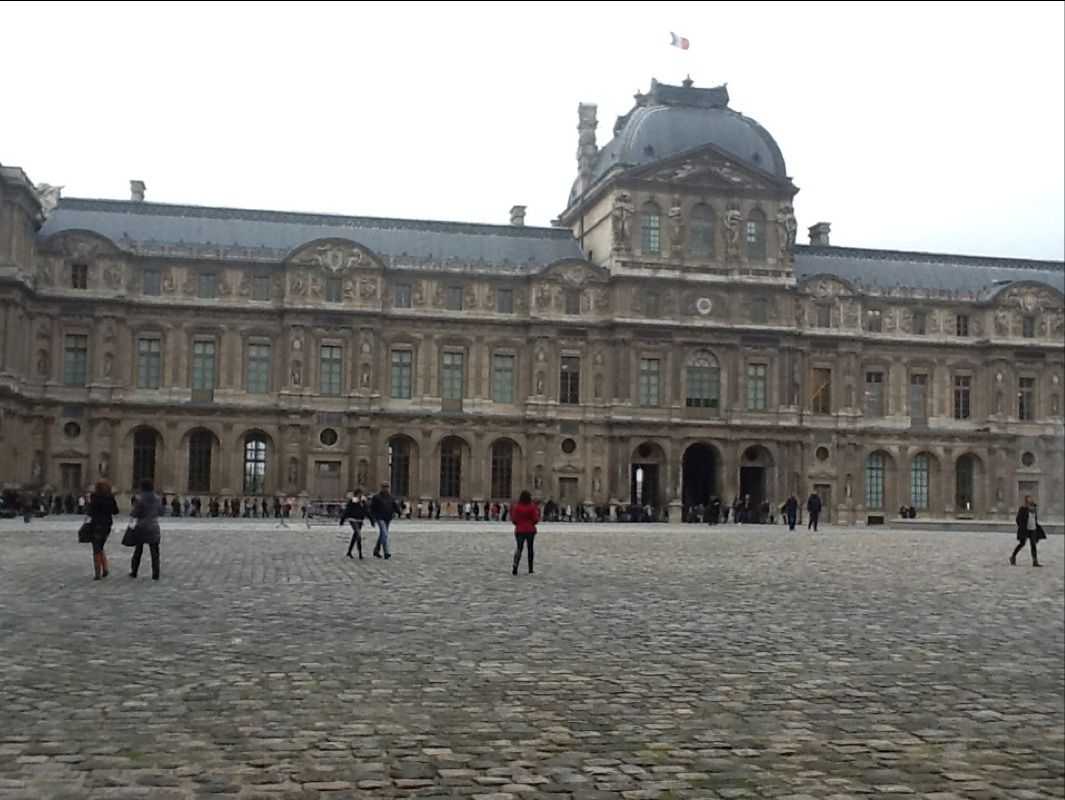
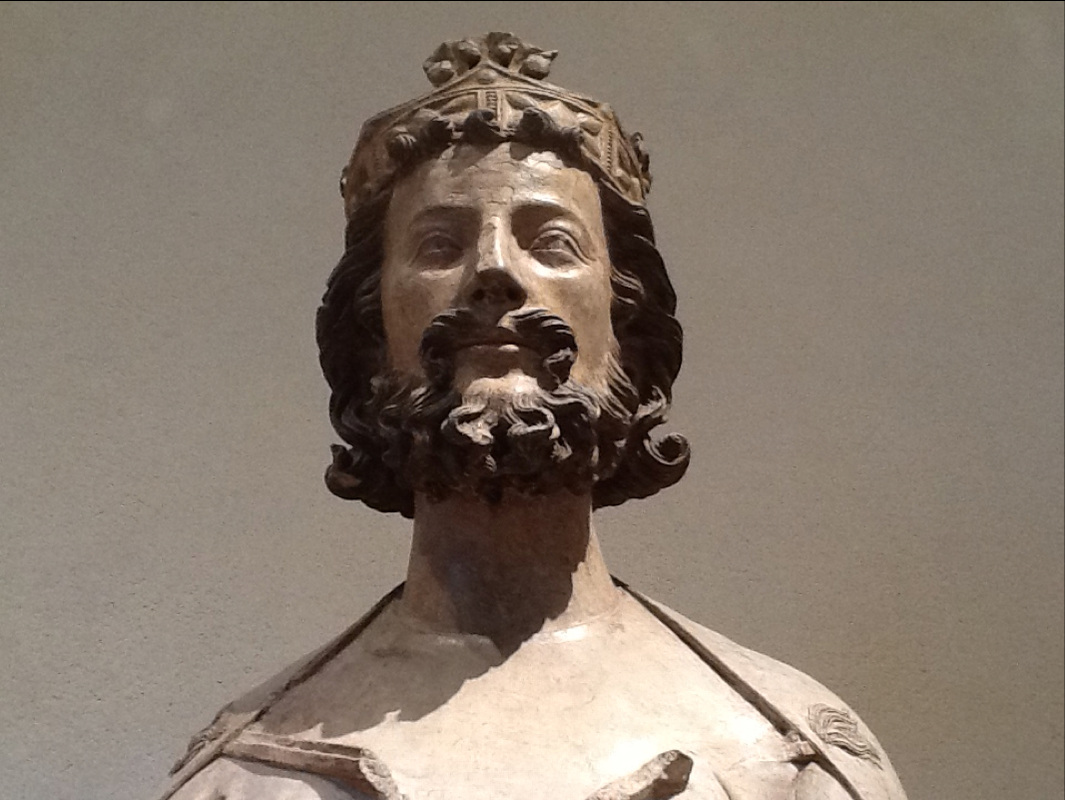
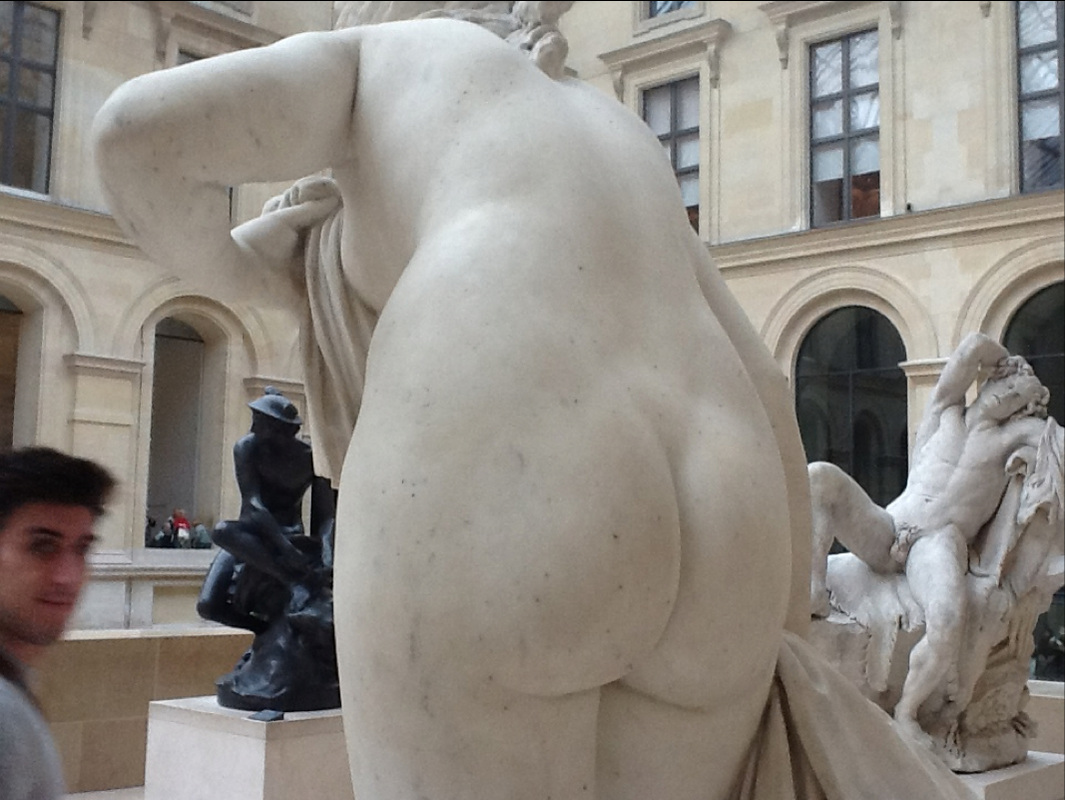
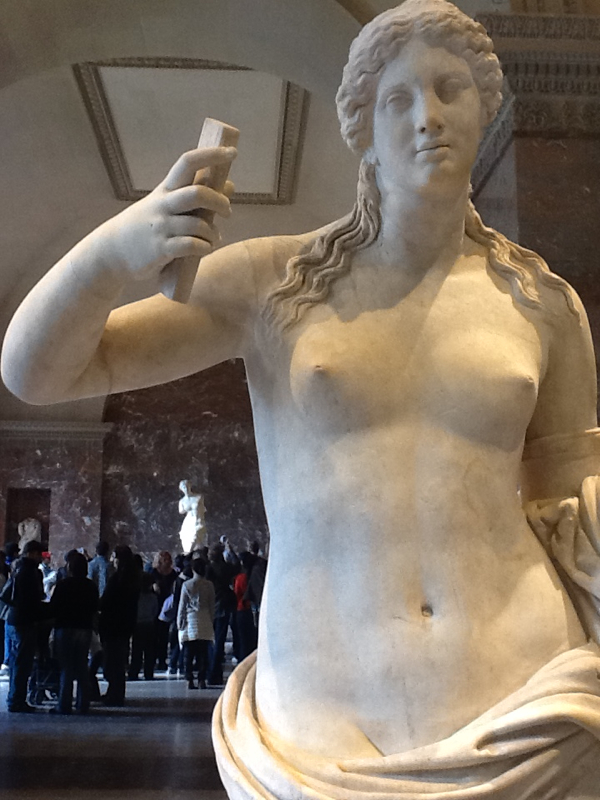
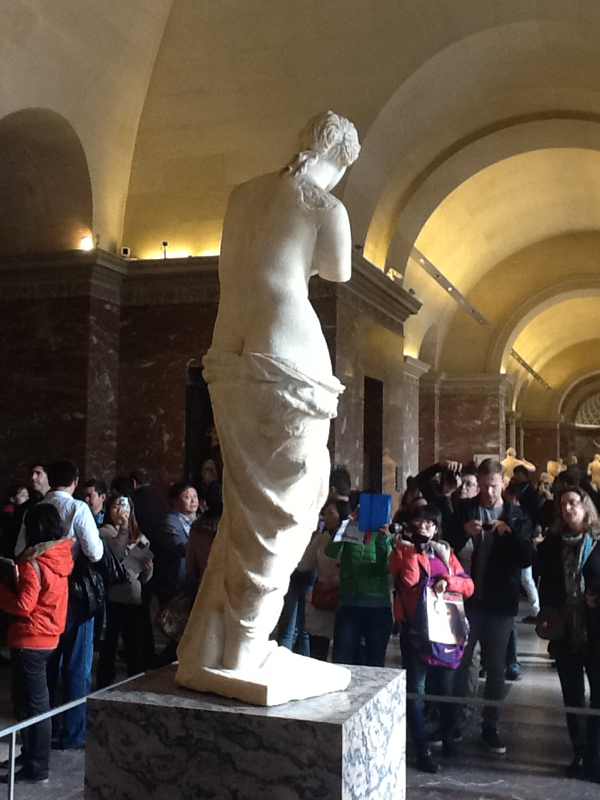
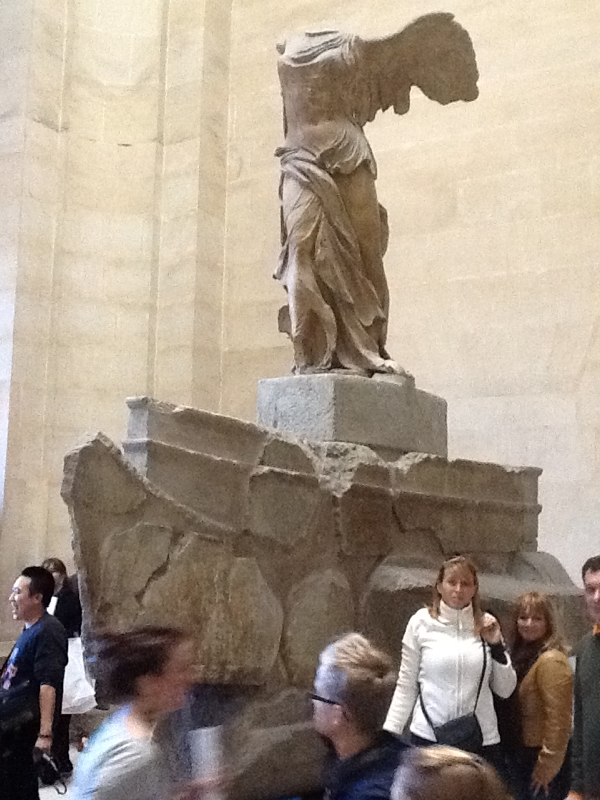
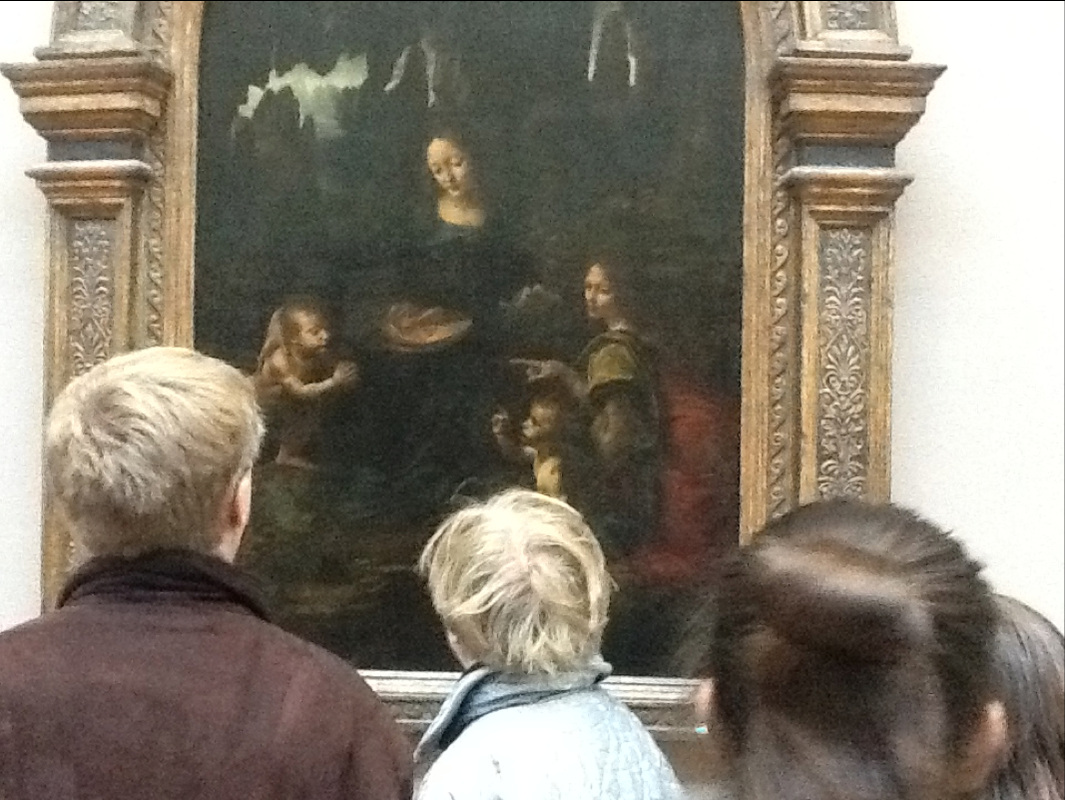
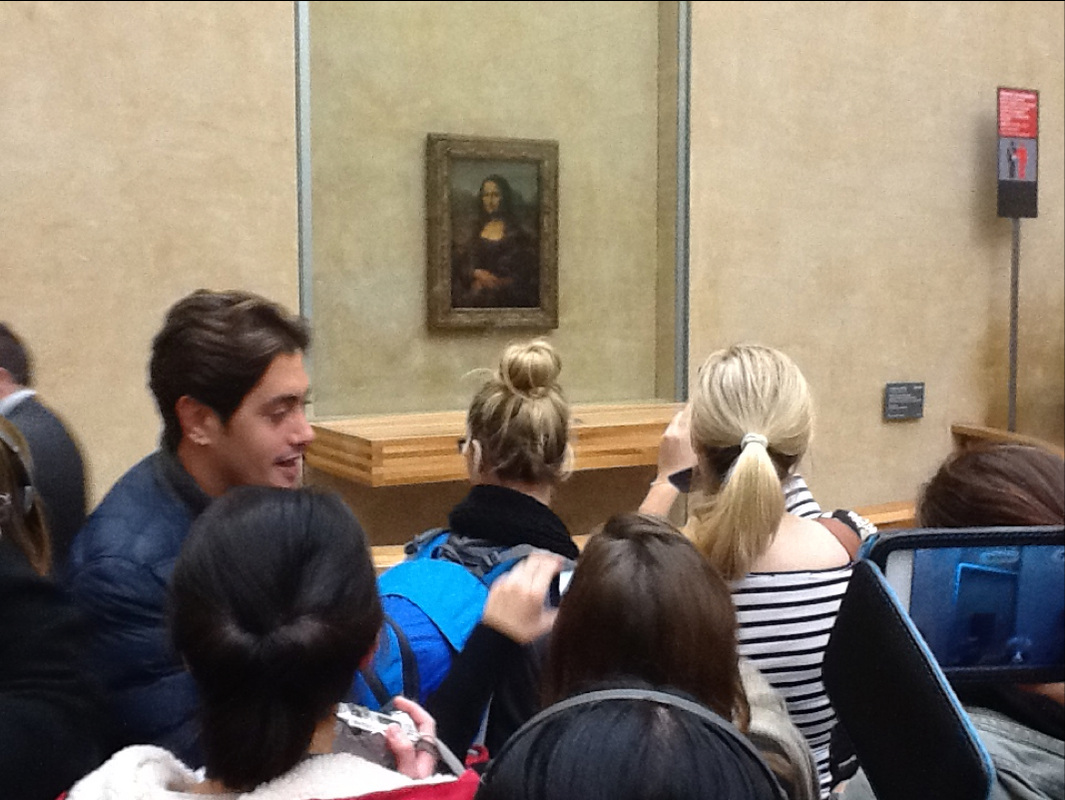
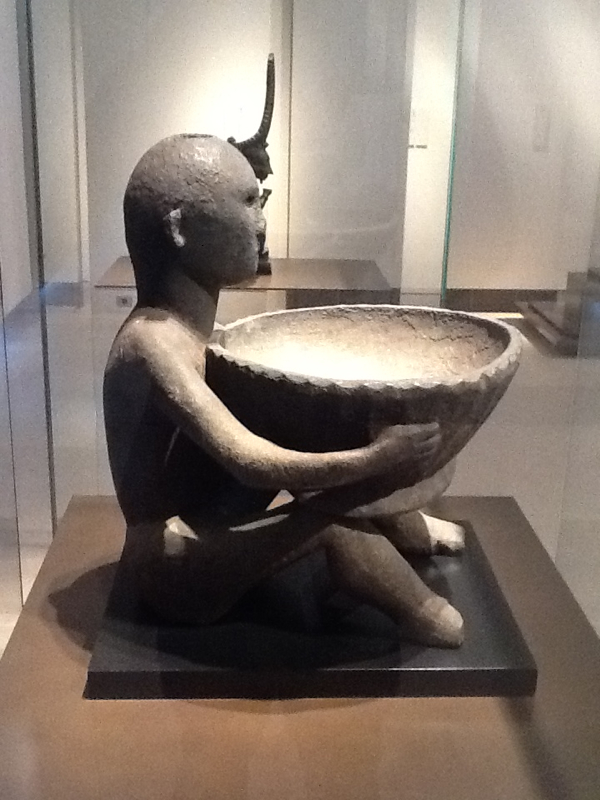
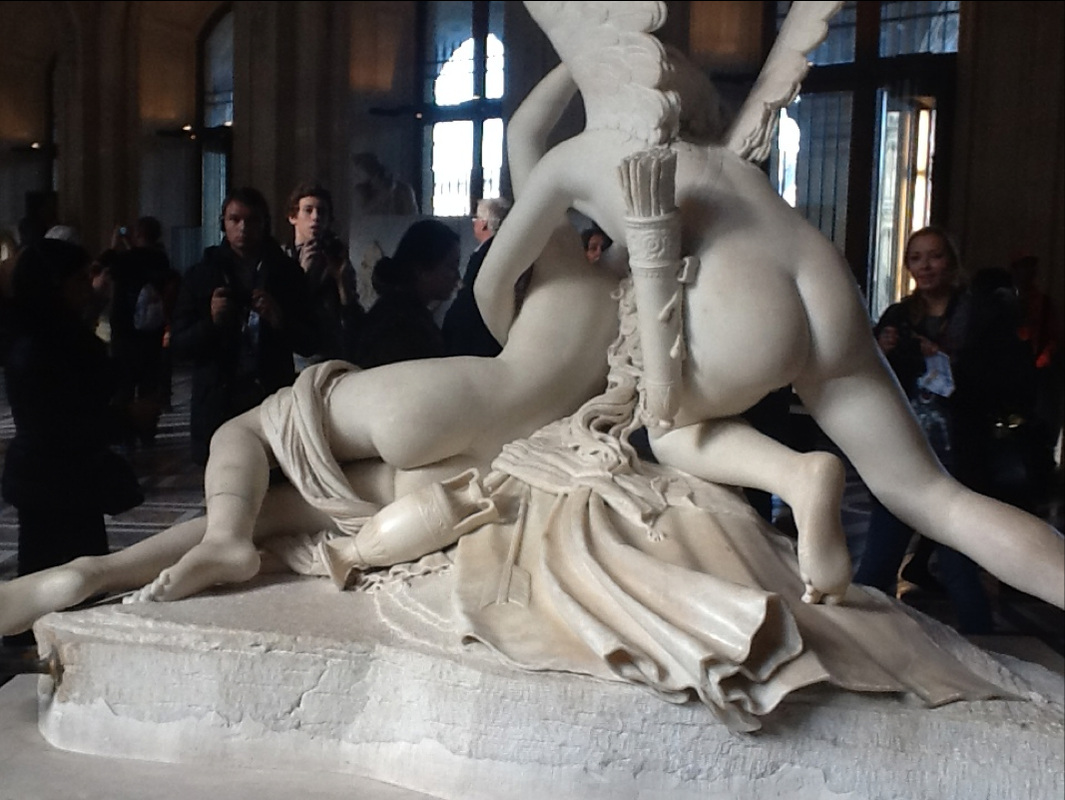
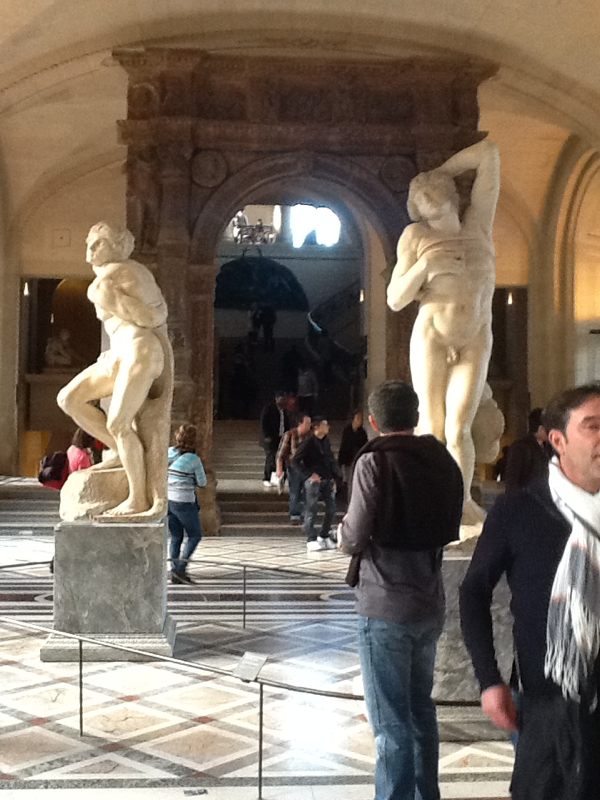
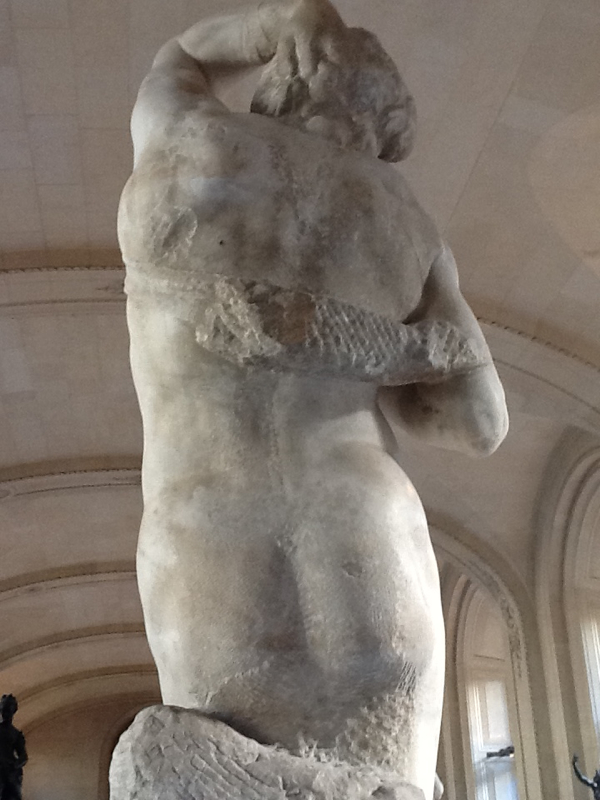
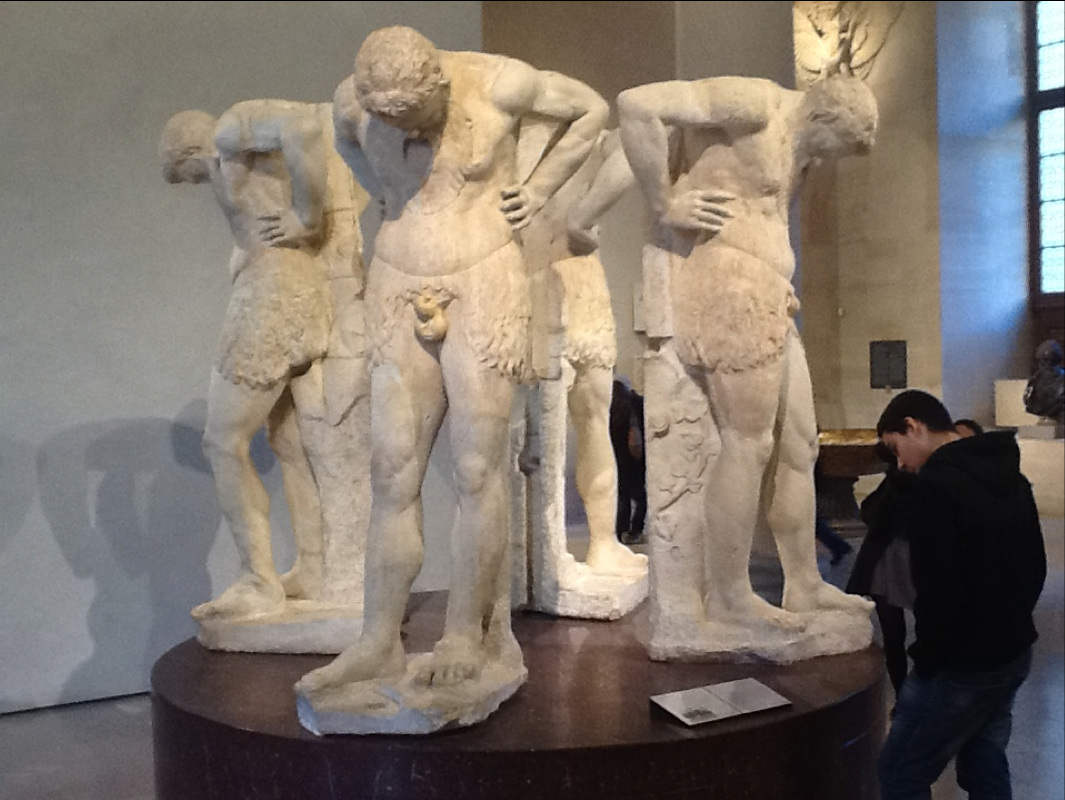
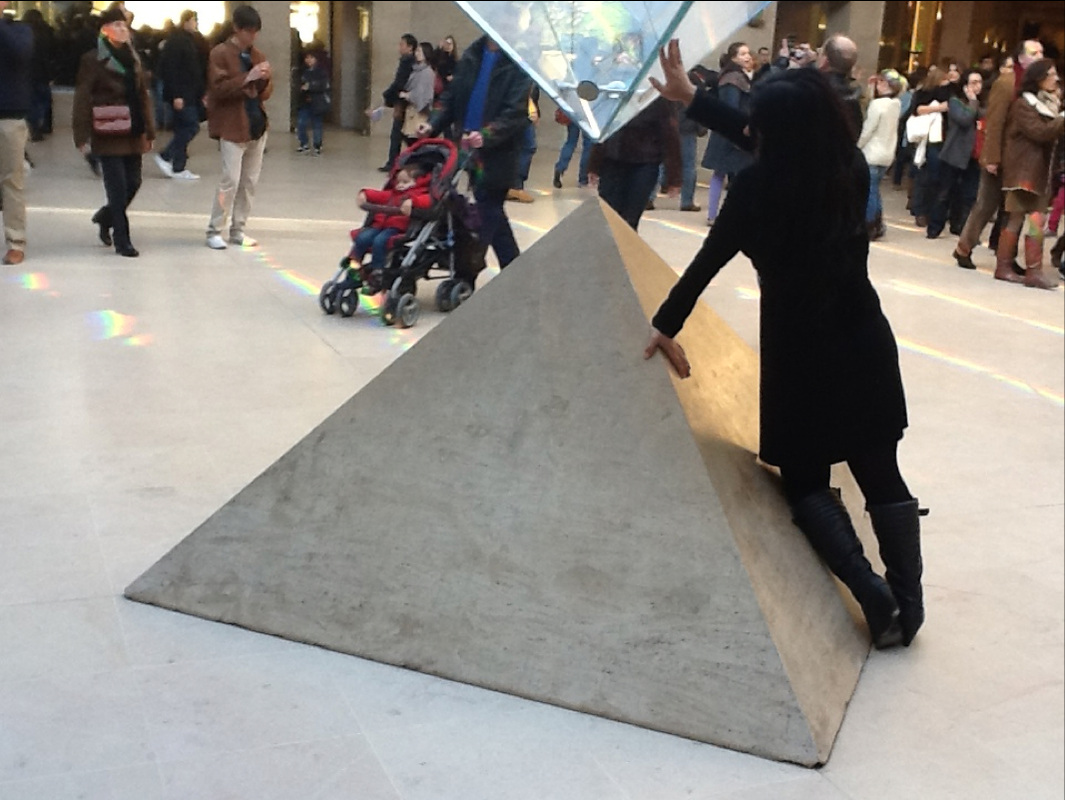
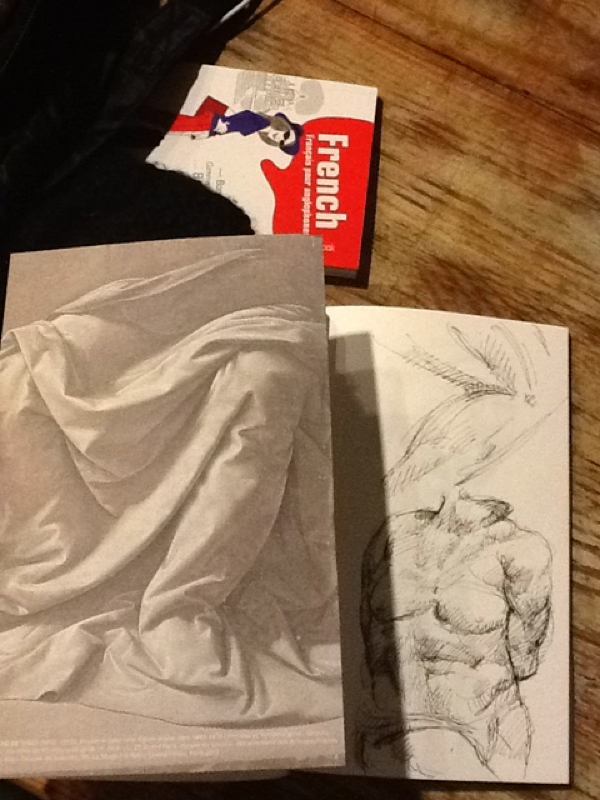
 RSS Feed
RSS Feed